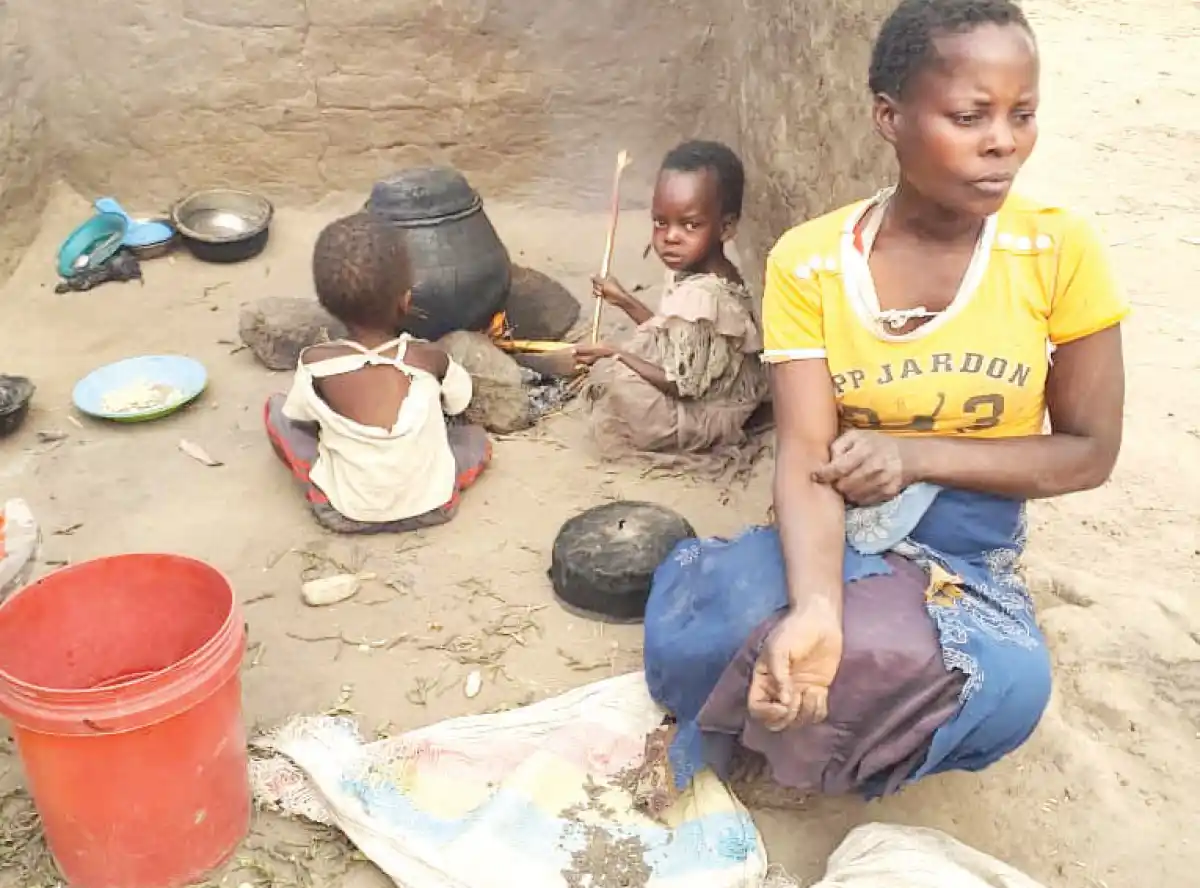
By Jonah Pankuku & Blessings Tambala:
Almost every year, millions of poor households in Malawi are miserable and unable to feed themselves.
This year is another, with millions now pushed to the edge and resorting to life-threatening survival remedies.
For instance, until two days ago, Margret Mnebe, a single mother of four in Traditional Authority Mtumbwinda in Machinga District was surviving on buffalo beans locally known as chitedze.
Like many others in the district and around the country, she could not tell where the next meal for her family would come from, until the government intervened this week with food distribution after Times published the people’s tales of hunger early in the week.
“The situation is so dire here. Even the scramble for the chitedze has worsened since many people are banking on it. Hunger has left us so miserable, hopeless and helpless,” Mnebe told us earlier.
On this day, we had found her boiling the buffalo beans with her two kids besides her.
Dry spells and the flooded Lake Chilwa dealt their rice fields, their yearly hope, a heavy blow.
“Initially, we used to survive on maize husks. So, due to the worsening hunger, the husks are now on high demand, expensive and scarce,” she said.
Traditional Authority Mtumbwidwa told Malawi News that hunger has gone out of hand in the area. He pleaded for the government’s regular support.
“Even areas close to Chiuta River are badly affected. People didn’t harvest much. People from traditional authorities Mlomba, Mataka and Ngokwe are also at their lowest,” he said.
Two months ago, Paramount Chief Kawinga of the Yao tribe told President Lazarus Chakwera at a rally that Machinga District had already lost three children due to hunger this year.
In March, Chakwera declared a State of Disaster in 23 out of the country’s 28 districts affected by the El Nino weather phenomenon.
He said government’s preliminary assessment then was that close to two million farming households had been affected.
He estimated that close to 600, 000 metric tonnes of maize valued at K357.6 billion would be required for the humanitarian response.
In response, the government through the Department of Disaster Management Affairs (Dodma) developed a national response appeal with the objective of boosting national food stocks and assist those affected by El Nino.
Dodma spokesperson, Chipiliro Khamula, said they got $10 million from the World Bank and gave part of it to the Ministry of Agriculture for mega farms and another to Admarc and National Food Reserve Agency (NFRA) to shore up the food stocks.
“The Malawi Vulnerability Assessment Committee (Mvac) report indicated that 5.7 million people would face hunger between October this year to March 2025. We rolled out a once-off distribution of relief food and have distributed 30, 000 of 50 kilogrammes bags of either maize flour since July,” he said.
He added they cannot wait for October as the department has received fresh reports of severe food insecurity in districts like Chikwawa, Dedza, Dowa, Lilongwe, Machinga, Nkhotakota, Nkhata Bay, Salima and Nsanje.
However, Dodma does not have enough financial resources for this exercise. It faces a deficit of K88 billion from its budget of K278 billion.
“We have so far managed to mobilize K190 billion. But that will not stop us from rolling out the exercise. We hope to mobilize the rest along the way,” he said.
Minister of Agriculture Sam Kawale recently gave assurances in Parliament that government has the situation under control.
He said through the NFRA, the government is storing 35, 000 metric tonnes of maize and that Admarc holds 31, 000 metric tonnes of the grain for direct sale to the public particularly in areas with limited food access to stabilize prices.
“We are exploring further imports and alternative strategies to bolster our reserves and through the winter production whereby NFRA will off-take maize from some commercial farmers with over $6.8 million already secured,” Kawale said.
According to the United Nations, an estimated 61 million people in Southern Africa are food insecure due to drought and flooding.
A total of 20.9 million, mainly in Malawi, Mozambique, Zambia, Zimbabwe and Madagascar, were projected to face severe acute food insecurity by May 2024.







0 Comments